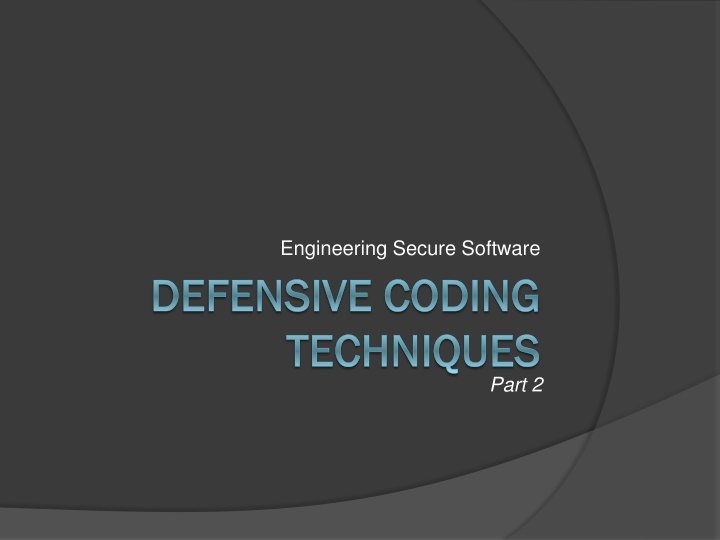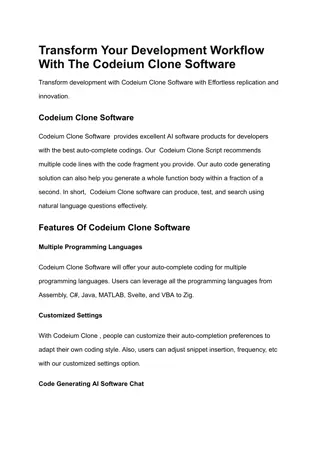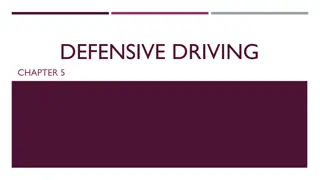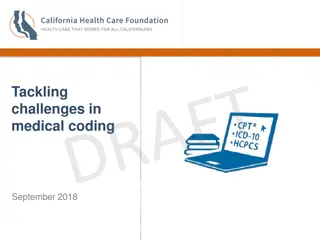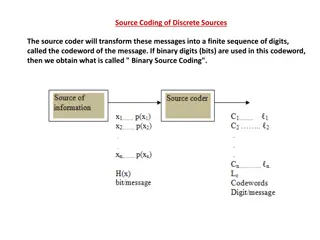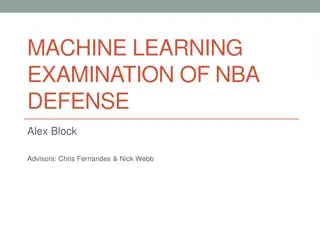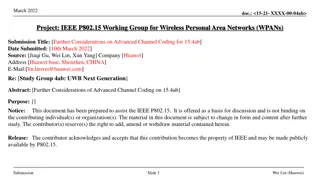DEFENSIVE CODING DEFENSIVE CODING TECHNIQUES TECHNIQUES
Ensure secure software development by implementing defensive coding techniques such as validating input, sanitizing input, exception handling, and more. Avoid insecure practices like clone method usage, serialization risks, and memory management pitfalls. Learn how to code defensively to enhance security and maintainability in your projects.
Download Presentation

Please find below an Image/Link to download the presentation.
The content on the website is provided AS IS for your information and personal use only. It may not be sold, licensed, or shared on other websites without obtaining consent from the author.If you encounter any issues during the download, it is possible that the publisher has removed the file from their server.
You are allowed to download the files provided on this website for personal or commercial use, subject to the condition that they are used lawfully. All files are the property of their respective owners.
The content on the website is provided AS IS for your information and personal use only. It may not be sold, licensed, or shared on other websites without obtaining consent from the author.
E N D
Presentation Transcript
Engineering Secure Software DEFENSIVE CODING DEFENSIVE CODING TECHNIQUES TECHNIQUES Part 2
Last Time Always code defensively Principles Writing insecure code is easy Maintainability still counts Know thy APIs Complexity is the enemy of security Don t be paranoid Tree of Knowledge Validating Input Sanitizing Input Exception Handling Subclassing Immutability Concurrency public static final
Cloning is Insecure (and Medically Unethical!) Every Java object has a clone() method Often error-prone Doesn t do what you think it does Most people don t abide by the contract Even the Java architects don t like it The Java Language Secure Coding Guidelines from Oracle recommend not using java.lang.Cloneable entirely. Use your own copy mechanism if needed
Serial Killer Serialization is often unnecessary, difficult to get right Deserializing is essentially constructing an object without executing the constructor If your system uses it, don t assume the constructor will be executed Can reverse-engineer to violate constructor post- conditions Complex input! Also, serialized != encrypted Confidentiality disclosure Use transientfor variables that don t need serialization e.g. environment info, timestamps, keys
free is Not Idempotent Yes, you need free() every malloc() BUT! Don t call free() twice! Something else might be already using that memory Now it can get overwritten by someone else definitely availability problem, potentially integrity int *a, *b, *c; a = (int *) malloc(sizeof(int)); //a is now 0x12345678 free(a); //byte 0x12345678 is now available to malloc a=0; //zero-out pointer after free, just in case b = (int *) malloc(sizeof(int)); //b is now 0x12345678! *b = 5; Also: don t double-free! free(a); //free 0x12345678 again!?!? b is now freed too! c = (int *) malloc(sizeof(int)); //c is now 0x12345678 *c = 6; printf( %d , b); // prints 6 not 5! corrupted!!
Memory Organization Assumptions Don t rely upon the memory organization of the compiler and OS E.g. C-code: char a=5; char b=3; *(&a+1)=0; /* b is now 0 */ /* this may work, but not advisable */ Lots of problems with this Compilers change OS s change Dev environment vs. Customer environment Really difficult to debug
Dead Store Removal Don t leave sensitive data sitting in memory longer than needed Hibernation features dump RAM to HDD Segfault core dump passwords! The following is usually a good idea... void GetData(char *MFAddr) { char pwd[64]; if (GetPasswordFromUser(pwd, sizeof(pwd))) { if (ConnectToMainframe(MFAddr, pwd)) { // Interact with mainframe } memset(pwd, 0, sizeof(pwd)); //clear password } } BUT!!! C++ .NET and gcc 3.x will optimize away that last call since pwd is never used again Some libraries have specific functions to avoid such optimizations, e.g., explicit_bzero on OpenBSD
Environment & File Confusion In C/C++, the putenv() and getenv() vary OS to OS Change depending on the compiler and platform Sometimes case-sensitive, sometimes not An attacker can add an environment variable that overrides yours (e.g. to his own JVM) putenv("TEST_ENV=foo ); putenv("Test_ENV=bar ); constchar*temp = getenv("TEST_ENV"); if(temp == NULL) { /* Handle error */ } printf("%s\n", temp); /* foo on Linux, bar on Windows*/ Same with file names in Windows and Linux Do not rely on case sensitivity when interacting with the platform
Native Wrappers If you use another language, you inherit all of the risks in that language e.g. Java Native Interface (JNI) can execute a C program with a buffer overflow Also: treat native calls as external entities Perform input validation & sanitization Loaded at runtime spoofing opportunity
Watch Character Conversions Most apps require I18N in some form You will need to convert one character set to another for translation When apps catch on , I18N is usually an afterthought Not all character sets are the same size! Assume 4-bytes for a character? Buffer overrun on Chinese chars Not every byte maps to a character Sometimes multiple bytes map to a single character Recommendations Use unicode: UTF-8 or UTF-16 Don t roll your own converters Check: web servers, database systems, command inputs
Let your GET mean GET HTTP protocols have different actions GET for retrieving data (typical usage) POST, DELETE, etc. modify stuff HTTP protocol specifies that GET actions should never have a persistent effect (e.g. model) Even though you can encode parameters into URLs Greatly helps mitigate cross-site request forgery (CSRF) Rarely respected This is okay: <a href="index.jsp?navigation=home">Home</a> This is not: <a href="index.jsp?changeName=Bobby">Change Name</a>
DoS in Many forms Denial of service occurs in many, many ways Overflow the hard drive Overflow memory page faults Poor hashcodes constant hash collisions Slow database queries Poor algorithmic complexity Deadlocks, race conditions, other concurrency Network bandwidth issues Recommendations: Black-box stress testing White-box, unit-level stress testing Focus less on user inputs, more on the logic Learn the art of profiling e.g. java agentlib:hprof
Dont Forget Config Files! Vulnerabilities can also exist in system configuration e.g. log overflow, hardcoded credentials, authorization problems Makefiles & Installation definitions Insecure compiler optimizations e.g. dead store removal optimizations Using out-of-date, vulnerable dependencies Also: I18N configurations General configuration Example configurations Recommendation Bring these up in code inspections Look at the defaults, and what is missing
Other Defensive Coding via VotD Resource exhaustion Check the limits of your input Integer overflows Buffer overflows Don t rely on ASLR to protect against buffer overflow accessing data!! Error message information leakage Secure logging Log overflow Avoid logging stuff that s sensitive anyway Limit use of privileged features of the language Use the Java Security Manager Classloader override Complex file system interaction Reflection Abuse More serialization restrictions
Concept: Attack Surface Most exploits enter in through the UI Often the same interface the users see Hence: input validation & sanitization Attack surface The number & nature of the inputs for a given system Can be quantified Usually compared Attack surfaceincreases with More inputs e.g. new input fields, new features Larger input space for a given input e.g. allowing a markup language instead of plaintext
